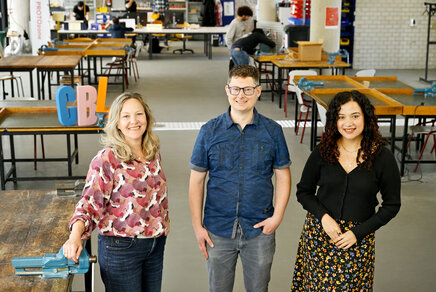‘Reflecting on what I’ve achieved and what my ambitions are is really useful’
Karin Smolders, associate professor at the department of Industrial Engineering and Innovation Sciences, shares her experiences with the biographical sketch.
![[Translate to English:] Karin Smolders. Photo: Bart van Overbeeke](https://assets.w3.tue.nl/w/fileadmin/_processed_/6/1/csm_BvOF%20biosketch%20Karin%20Smolders_14329f011e.jpg)
At the end of 2023, Karin Smolders presented her biographical sketch to the Assessment Committee (BAC) as part of her promotion process to associate professor 2 (UHD2).
Associate professor Karin Smolders works in the Human-Technology Interaction group within the Industrial Engineering & Innovation Sciences department. She has a background in chronobiology, psychology, and data science, and she is interested in how we can best use technology to monitor and manage health. Her research focuses on the impact of lighting technology on human well-being, health, and performance.
Time and focus
Since February 2024, she’s been appointed UHD2. She wrote a biographical sketch to prepare for the necessary BAC interview, highlighting her achievements and ambitions. Her bio-sketch outlined how she wants to allocate her time and focus between research, education, impact, and leadership.
She spends about 50% of her time on teaching, 40% on research, and 10% on impact. “It wasn’t easy to make that division because tasks are often intertwined and the division typically varies across quartiles. This is the default, but adjustments are possible,” adds Smolders.
Combination
Smolders appreciates the combination of teaching and research in her work. “As a researcher, I want to provide solid scientific insights that can bring innovations in healthcare.”
“Additionally, I enjoy working with and contributing to the careers of the engineers of the future. I want to be a dedicated, approachable, and inspiring teacher for them.”
Leadership
Besides teaching and conducting research, Smolders has several management tasks. For example, she is a board member of the TU/e Young Academy of Engineering, a network of young, talented researchers at our university. “I spend a lot of time on that, but I usually do this outside my standard hours.”
“Writing my biographical sketch forced me to make time to reflect on myself. To think about what I’ve achieved and what my ambitions for the future are. It helped me make my vision of teaching, research, impact, and leadership more explicit and concrete. I found that very useful.”
Brainstorming
She advises scientists who still need to write their biographical sketches to take sufficient time to work on them. “Also, brainstorm with others to get your visions sharp and concise.”
For her, writing the biographical sketch wasn’t much different from documents she had to submit for previous promotions. “You already had to give a vision on teaching and research. The bio-sketch explicitly asks, in addition, for a vision on impact and leadership.”
Wellbeing
Smolders attaches great importance to social safety and mental well-being in her work. “In the classroom, in project meetings, and within my team. That could be even more explicitly included in the biographical sketch template. Especially given the high workload in the academic world. We must ensure that work demands are manageable and don’t become a hindrance instead of a positive challenge.”
Written by
More on our strategy


![[Translate to English:]](https://assets.w3.tue.nl/w/fileadmin/_processed_/0/4/csm_OAY%202024%20Site%20Picture%201080x720%20px_e2e67b3e60.jpg)